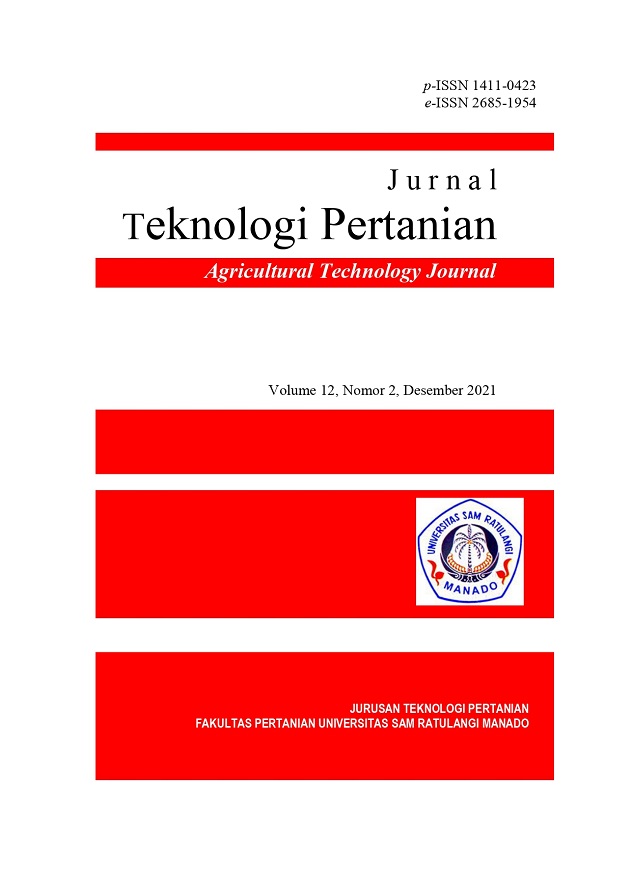The Effect of the Substitution of “Roa” Banana (Musa acuminate) Flour on the Level of Preference for Biscuits
DOI:
https://doi.org/10.35791/jteta.v12i2.52682Keywords:
Pisang “Roa”, biskuit, uji organoleptic.Abstract
The aim of this research was to determine the formulation of banana flour "Roa" and wheat flour in the manufacture of biscuits that were most preferred organoleptically (color, taste, aroma and texture). Furthermore, biscuits with the most preferred formula were organoleptically analyzed for their proximate content. This study used a completely randomized design, consisting of 5 levels of treatment for the formulation of roa banana flour and wheat flour: A (30: 70); B (40: 60); C (50: 50); D (60; 40); and E (70; 30). Each treatment was repeated 3 times. The organoleptic test results showed that biscuits treated with B, namely the 40% banana "Roa" flour and 60% wheat flour were the most preferred biscuits for the panelists for color, taste, and texture parameters. The results of the analysis of the proximate content of biscuits with this formulation were as follows: water content of 2.07%; ash content 1.51%; protein content 6.19%; fat content 27.73%; carbohydrate content of 5.12%. This biscuit product has fulfilled SNI biscuit. Based on organoleptic assessment, this product is accepted (preferred) by panelist.



 Journal Template
Journal Template


